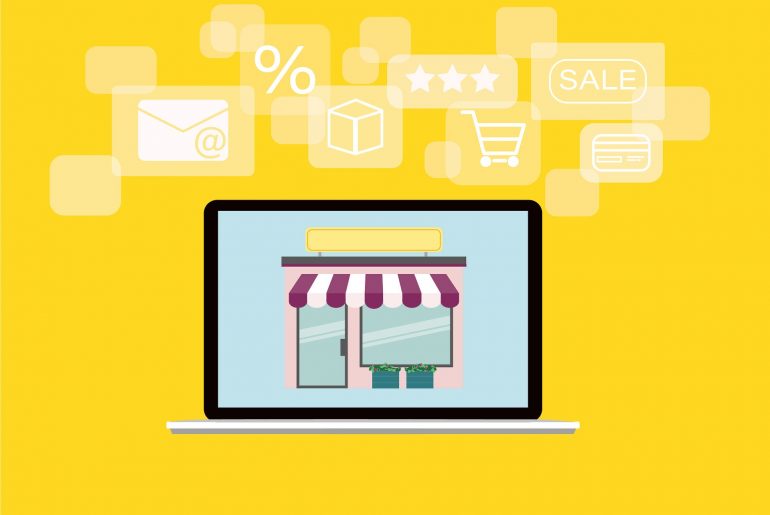Did you know that increasing customer retention by just 5% can bring a revenue boost of up to 95%? The figure is convincing enough to make every business owner and marketer think of potential strategies and approaches.
The business landscape is fast-changing, and organizations find it increasingly difficult to stay competitive. One of the major challenges companies face is client retention and reactivation.
A study by CallMiner revealed that switching suppliers’ costs companies $136 billion a year. Avoiding such losses is becoming a businesses’ top priority, and marketers are looking to develop effective B2B Marketing strategies to improve customer engagement and enhance loyalty.
How to effectively address the challenge of client retention and reactivation? New realities call for innovative approaches. This is where alternative B2B marketing strategies come into play.
Unlike the traditional ones, which make use of conventional methods like print ads, billboards, and television ads, alternative B2B marketing strategies involve digital marketing tools, such as email, direct mail, websites, and social media.
We’ve collected some proven ways to enhance customer retention and reactivation. Let’s go through these eight top alternative B2B marketing strategies together and see how they can help you keep your existing clients engaged, reduce churn, and even attract new customers.
8 Alternative B2B Marketing Strategies for Client Retention and Reactivation
1. Use all communication channels
Reportedly, today’s B2B customers regularly interact with their suppliers on ten or more channels. By leveraging multi-channeling, you can stay in touch with your client and communicate with them on the preferred platform without gaps and lapses.
Multi-channeling is the coordinated practice of communicating with customers using a combination of interaction channels, like email, direct mail, text messaging, retail stores, social networking platforms, podcasts, and websites.
Among the companies that best utilize multichannel strategies are Ikea, Apple, and The Home Depot. They have all recognized the need to be present and responsive where their customers are – on computers, phones, and other mobile devices. This has translated into improved customer experiences and retention.
To make multi-channeling work for you, use all relevant communication channels to engage your customers and maintain warm relationships with them.
As discussed in 7 Mind-blowing Multichannel Marketing Strategies You Must Implement Now:
Still Not an User of Aritic PinPoint Automation?
❝ Technology is what makes multi-channel marketing possible, and your outcomes heavily depend upon the capacities of the technology you utilize. No matter how good, extensive, and valuable content you create and share on your communication platforms, without proper targeting, your chances to get that content across to the desired audience are scarce. Which makes all your efforts put into crafting your content pointless.
A smart CRM platform combined with marketing automation tools can help you bring all your customer data in one place and take benefit from seamless coordination across your communication platforms.
2. Increase read and response rate
To keep and reactivate your clients, you need to make sure your message gets across. What’s the average read and response rate of the messages you send on the different channels, and how can you improve it?
While almost half of the recipients favor email as a way of marketing communication, the average open rate is 22% for the B2B sector. Another way to maintain a continuous connection with them is by implementing various online communication tools like WhatsApp, Viber, Telegram, and Skype, just to name a few.
With an open rate of 98%, text messaging is an excellent way to stay in touch with your customers. With the right tool, such as the TextMagic business messaging platform, you can send and schedule text messages and SMS campaigns from your computer.
To maximize the read and response rate of your marketing outreach, follow these best practices:
- Always require permission and provide an easy way for your recipients to opt-out of receiving your messages
- Establish consistency of reach out to your clients
- Make sure to deliver the content that is relevant to your customers
- Keep your customers updated on any time-sensitive offers, company news, and promotions
❝ A bonus tip:
Implement a combination of all these messaging methods and integrate them with your CRM to boost the efficiency of your marketing outreach.
3. Develop incentive strategies for top customers
Develop an incentive strategy to hook your customers to your offers. Examples of customer incentives are discounts, free shipping, bonuses, free upgrades, loyalty points, VIP access & recognition, etc. You can provide your customers with personalized discount codes or URLs that trigger a tailored customer experience. This will build trust and boost customer loyalty.
Choose and develop an incentive program that suits your business model. An example is the B2B loyalty program “Celebrity Rewards” launched by Celebrity Cruises aimed to encourage agents to upsell clients by giving them points and the chance to earn an additional £500 in points if they perform best. The result? A 13% increase in revenue.
4. Schedule automatic follow-ups
Less than 3% of companies were found to send follow-up emails to their customers. It is easy to lose track of clients if you don’t have a system of keeping in touch with them. Scheduling automatic follow-ups is a proven customer nurturing method.
Maintain consistent contact with your customers by implementing effective tools to automate the process. Aritic, for example, helps businesses build, test, and optimize their follow-up email campaigns and track their performance.
An example of an excellent customer retention strategy is provided by the Home Security Systems and Automation company Ring, which sends follow-up emails with information about setting up and using the product that the customer bought.
To get customers back, reconnect with them to thank them, offer them additional information, and help them get the most of your product.
5. Benefit from the power of personalization
Humans want special treatment; as a result, one of the ways to win people’s hearts is to send them messages that are specifically crafted for them.
❝ According to a report by Epsilon, 80% of customers are more likely to make a purchase when a company provides a personalized experience and 90% say they find personalization appealing.
Delivering personalized real-time customer experiences is considered the most exciting and promising trend by company and agency respondents in Econsultancy’s Digital Trends 2018 report.
Forbes lists FedEx among the best B2B companies focusing on personalization and developing a customer-first culture. The brand is famous for streamlined communication eliminating the multiple emails sent from different departments by building one personalized newsletter bringing relevant information and value to the customer.
Here is how to personalize the customer experience:
- Segment your customer base using demographic data and customer information. With Aritic PinPoint’s features, for example, you can implement smart customer list segmentation and micro-segmentation to help target your clients.
- Create messages and offers tailored to each group.
- Use CRM or email automation tools to deliver customized campaigns to each customer group.
- Get customer feedback, analyze and optimize the process.
6. Provide ongoing support to your customers
89% of organizations say that excellent customer service plays a huge role in customer retention. This statistic indicates the importance of implementing a strategy that enables you to prioritize ongoing support to your customers.
Note that establishing deep relationships of trust and collaboration is crucial for the B2B context. Also, the issues experienced by your B2B clients tend to be more complex, and the time for their solving is respectively longer.
Keeping these specific traits in mind, make sure to:
- Be perfectly aware of your customers, their pain points, and potential issues
- Provide your clients with proper resources on using your product or service and with reliable self-service options
- Be responsive across all channels of communication. A full-fledged solution, such Aritic Desk, can help you coordinate multiple channels like SMS, emails, social media platforms, and phone calls.
- Streamline the process of resolving customer issues by utilizing a customer support ticket system, which will boost your support team’s efficiency.
A company that perfectly illustrates reliable and consistent custom support is Wells Fargo. The B2B customers the bank partners with have access to extensive training resources on building and growing businesses. The better customers understand the product, the more engaged they are.
Wells Fargo’s customers can have the full range of banking solutions centralized in one place with easy mobile and online access.
7. Collect regular feedback
Collecting feedback regularly will help you to stay ahead of the curve. Customer feedback methods are follow-up emails, surveys, chats reviews, call reviews, customer interviews, and feedback forms.
Email automation, CRM, survey, and opt-in form tools can help you to automate the feedback collection process.
When it comes to frequency, tri-monthly feedback collection is ideal. The questions to ask your customers should cover key areas like the quality of customer service, product quality, customer satisfaction, and the likelihood of a customer to recommend your business.
IBM, one of the biggest players in the information technology industry, is constantly improving its products through regularly asking for feedback from its B2B customers.
Execute Effective Marketing Automation Workflows Now
And obviously, enhancing the product quality and features translates into higher customer retention rates.
8. Use analytics to track user behavior
Tracking user behavior offers valuable opportunities to predict customer intentions, issues, and interactions. With all these insights, businesses can identify any friction points and sectors that need improvement, thus streamlining customer experiences.
Improved customer retention and acquisition are among the key benefits of analytics recognized by almost half of organizations worldwide. How can you make it work for your business?
- Leverage CRM solutions to track user behavior and draw insights necessary for data-driven policies.
- Use AI-powered solutions like chatbots, tagging incoming conversations, and virtual assistants to generate data and track consumer behavior.
You can use tools like Aritic Pinpoint to track the efficiency of your marketing efforts and gain indispensable data that can help you segment your customer base, personalize your outreach, and improve your overall effectiveness.
Empowered with analytics to track their clients’ behaviors and interactions across the channels, big companies, such as Apple, carefully segment their customers to deliver outstanding services and products.
Conclusion
In conclusion, B2B marketing strategies are crucial for client retention and reactivation. The key is to focus on building strong relationships with clients and providing them with valuable solutions to their business challenges.
By implementing these strategies, businesses can build long-lasting relationships with their clients and ensure their satisfaction with the products or services offered. Ultimately, effective B2B marketing strategies can lead to increased customer loyalty, repeat business, and referrals, resulting in a positive impact on the bottom line.



